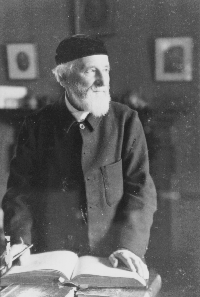Unfortunately for anyone hoping to learn about the elements, there are much more lines spent talking about Primo Levi’s life than the properties of materials in the book The Periodic Table. Despite its name, it is not so much a book about the elements, but about the life and times of its author. It explores how events and people in his life could be tied to the properties elements and spends a chapter on each of the elements (although he only titles 12).
The Periodic Table does describe some chemistry related facts, but does not go into substantial detail. The ideas in it however, tie together nicely and follow a roughly chronological timeline. Primo Levi starts with possibly the least scientific chapter of all, Argon. He briefly describes the non-reactive elements and how “They are indeed so inert, so satisfied with their condition, that they do not interfere in any chemical reaction”. He then goes on to describe how this can be related to the Jewish people of his ancestry, in his family in particular “They were never much loved or much hated; stories of unusual persecutions have not been handed down”, relating this to the un-reactiveness of Argon. All of the chapters follow this sort of format, though the topics vary from his family and friends, to a brief mention of his time in Auschwitz, to a fictional work relating to mercury he wrote himself.
Levi finishes with the ‘most scientific’ of all chapters: Carbon. In this chapter he describes a fictional journey of a carbon atom through the atmosphere, plants, and multiple animals. Again only briefly, he does mention Photosynthesis, respiration and other scientific-y subjects, although one would require previous knowledge of these concepts to gain a full appreciation of these references.
This, I found, is the case with most of the scientific concepts described- to gain a full understanding of what Levi is talking about, one must really have known about the concept first. Without the understanding much of the scientific concepts become worthless and the whole book becomes about Primo Levi. Therefore, I would recommend this book not to someone who is looking to learn about chemistry, but to someone who is interested in chemistry AND willing to read an autobiography of sorts, albeit a very interesting one.





